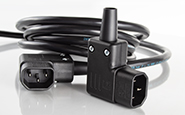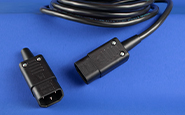Cord Sets with Plugs and Connectors
Ralph Bright—
Hello, I’m Ralph Bright, Vice President of Marketing and IT at Interpower.
We have real people answering the phones each day at Interpower which means we receive a number of product design questions. Usually if a question has been asked by one person, it means that others also have the same question.
One commonly asked question is: “Why can’t I use a cord with a plug on both ends or a connector on both ends?”
To answer this question, we have Mike Boyle, Vice President of Manufacturing and Logistics. Welcome, Mike.
Mike Boyle—
Thank you, Ralph.
Ralph—
So why can’t a cord have two plugs or two connectors?
Mike—
First of all, creating a cord set with a plug on both ends or a connector on both ends is not safe. Secondly, it is against the standards.
Ralph—
Why is this a problem?
Mike—
When you have a cord with a plug on each end, connecting one plug to a wall socket while the other is disconnected can create a shock hazard. The exposed plug blades are live. Furthermore, when you have a cord with just connectors on each end, one of those connectors must connect to an inlet with power. That inlet has exposed pins with live voltage which can create a shock hazard when the connector is not in place.
Ralph—
You mentioned that it’s against the standards. Can you elaborate further?
Mike—
Yes. The key cord set standards that address this are the I-E-C 60799 and North American standards U-L 817 and C-S-A C22.2 number 21. The definition within the C-S-A standard for a cord set states: “A length of flexible cord having an attachment plug at one end and a cord connector at the other end.” The I-E-C and U-L standards have similar definitions, stating one plug and one connector on a cord.
Ralph—
Thank you Mike for the information and thank you for joining us today.
If you have a question that you would like answered, please let us know by e-mailing us at info@interpower.com or calling us at 1–800–662–2290. For more information, check our website at www.interpower.com.






